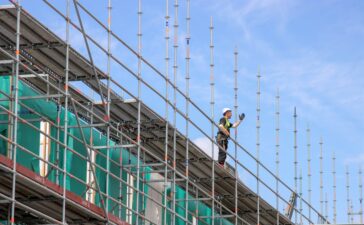A lot of those who work in certain industries hire the help of professional test and tagging services, but not everyone knows what that is, or how essential it can be for your business. In simple terms, the name was given to a process that checks the safety and security of both portable and fixed devices or appliances and machinery is what test and tag is.
The process itself involves a few things, such as visually inspecting the item for any inconsistencies or damages, and loose wires and then testing the electric aspects of it using what’s referred to as a “Portable Appliance Tester”, which is a hand-held gadget made specifically for this reason of inspection, to read more about this device, click here.
The United Kingdom, Ireland, New Zealand, and Australia are some of the countries that use this system when doing their routine checks for safety. It is also known as an “in-service inspection”.
Once the appliances or machinery has been tested it is then tagged to confirm that it has gone through the inspection. This is what the tag is for, and will include information such as the date of the review and the next due date. This type of testing can be done in any environment, from the domestic household appliances to the office environment machinery, as we will see below in this article.
In Australia and New Zealand, there is a standard AS/NZS 3760 guideline regarding safety and using electrical appliances https://www.standards.org.au/standards-catalogue/sa-snz/electrotechnology/el-036/as-slash-nzs–3760-2010, this document provides the industry standard and protocols for testing and tagging and includes a few recommendations in regards to who is certified to do this and how often it should be done.
Reasons for Performing A Test and Tag Inspection
One of the main reasons for actioning this is to ensure the overall safety of all employees inside a workplace, building, or a site. No matter what industry you work for, as long as you work with electricity, an inspection of some sort must be done regularly. This minimizes the risks of hazards especially towards equipment that is handled by humans.
Devices that have a short cable or wiring in them to operate are more susceptible to damage and short-circuiting, items such as removable plugs and those that have a high voltage of 50V and more should get tested.
3 Classes of Electrical Appliances That Should Get Tested
These electrical appliances fall under three classes, and tag symbols namely:
Class I – Which have one single insulated wiring casing, and require an “earth connection”, which is the reference point of an electric circuit where the voltages are usually measured. The symbol on the tag which the inspector will put typically will not have anything because there is no symbol for this class of appliances. Household examples of these would be irons, toasters, and kettles.
Class 2 – Have two layers of insulated wires and a plastic cover that provides this via a second casing. The “earth connection” is connected to the appliance and this is referred to as a “double box”, with a symbol similar to this – a square inside of another square. Examples of these types of appliances are hairdryers, electric drills, computers, photocopiers, and DVD players.
Class 3 – Are the appliances have a low voltage of 50V and less and electricity is supplied via a transformer. These are commonly identified by the “Class 3” symbol, and examples of these include low energy light bulbs or LED bulbs, mobile phones, and laptops or tablets. These are not required to have any “earth connection” and as such the electric current is blocked from being transmitted in the case of a circuit glitch.
What Makes A Good Test and Tag Service
When in need of one, and Electrical Testing Services test and tag just about any class of appliances available on the market. They work with various types of operations from the transport industries to the mining and construction and chemical, should prioritize this at every point, and make it a necessity for their worker to abide by the regulations once every 3 months. When not done correctly, or not done at all, a lot could happen.
These services must be well-established and have experience in dealing with these things, preferably over a long time. Some of the new ones are good but this must be checked against PAT testing compliance regulations.
They must also be able to provide a thorough report at the end of the service either via a reporting tool or a qualified form of reportage. The companies usually have qualified staff that is certified and trained at performing these tasks and of course one must check if they operate in your area. This is a service you will want to be completed regularly so finding a local establishment would be your best bet.
There are many risks involved when putting such an essential component of testing aside, or leaving it for later. All it takes is one short-circuit for your entire house or business to burn down to askes. Offices and companies are more at risk especially when they have several workers operating in the building, one may never know if an employee uses a tool the wrong way or misuses it. It could all go wrong within seconds.
Most of the things we take for granted are the same things we use within the home as well as the office. These things include the everyday appliances such as air conditioners in offices or homes, fax machines, heaters and fans, televisions, refrigerators, and freezers, or computer monitors and towers, kettles, power extension cords, microwaves, and ovens, cooling fans and stoves, to name a few.
All of the above units can cause some damage or the other from the smallest to the largest without even a moment notice. Getting your property and its appliances checked thoroughly by professionals, is the safety and more logical thing to do if you want to avoid and disastrous happenings to your space, which will cost you a lot more in fines and damages in the long run.





